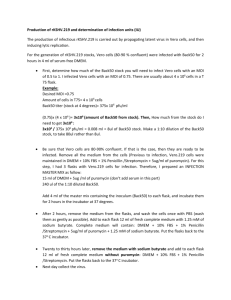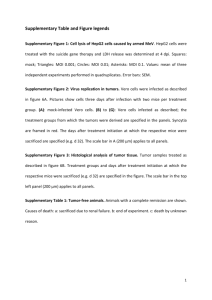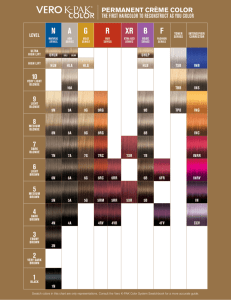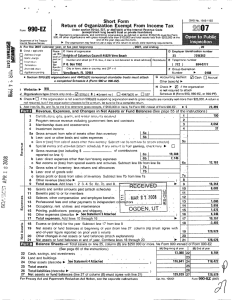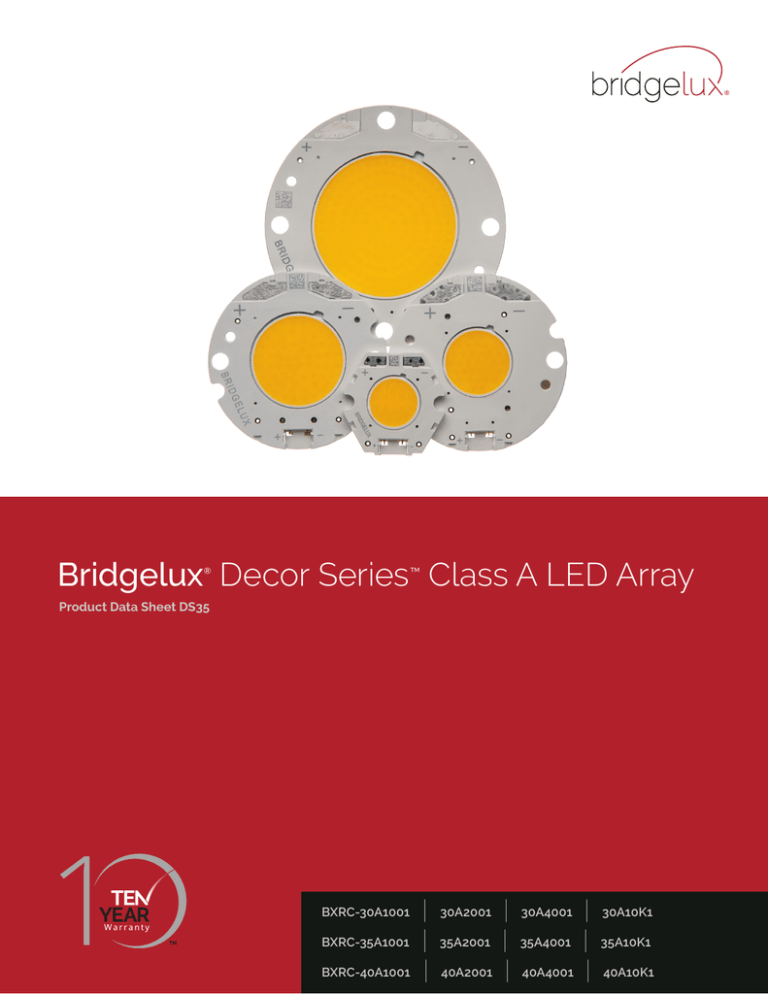
Bridgelux Decor Series™ Class A LED Array
®
Product Data Sheet DS35
BXRC-30A1001
BXRC-35A1001
BXRC-40A1001
|
|
|
30A2001
35A2001
40A2001
|
|
|
30A4001
35A4001
40A4001
|
|
|
30A10K1
35A10K1
40A10K1
Vero
Introduction
Bridgelux® Décor Series™ Class A products are a revolutionary advancement in lighting designed to match how humans
perceive and prefer light. The Class A specification was created by the Lighting Research Center (LRC) behavior studies
in conjunction with Bridgelux and other ASSIST members. Based on human factor response testing, the Décor Series
Class A products provide vibrant, natural and brilliant looking light, evoking an emotional attraction and response. The
Décor Series Class A products were developed for high-end retail, museum, architectural, premium building and
hospitality applications.
Bridgelux Décor Series Class A products are available on all Vero form factors. The Vero platform has been engineered
with advanced connectivity options and can operate over a broad current range, enabling multiple degrees of flexibility
in luminaire design optimization.
Features
Benefits
• Light quality is based on human perception of
color and light
• Broad application coverage for interior and
exterior lighting
• High gamut area index (GAI)
• Flexibility for application driven lighting design
requirements
• No harmful UV or near IR light in the spectrum
• Substantially broader GAI and color spectrum
than halogen
• High quality true color reproduction
• Uniform consistent white light
• Radial die pattern enhances optical uniformity
• Flexibility in design optimization
• Based on Bridgelux Vero COB LED array platform
• Enhanced ease of use and manufacturability
Contents
Product Feature Map
2
Product Nomenclature
2
Product Selection Guide
3
Performance at Commonly Used Drive Currents
5
Electrical Characteristics
7
Absolute Maximum Ratings
8
Performance Curves
9
Typical Radiation Pattern
16
Mechanical Dimensions
17
Packaging and Labeling
21
Design Resources
24
Precautions
24
Disclaimers
24
About Bridgelux
25
1
Product Feature Map
In addition to delivering the performance and light quality
required for many lighting applications, Décor Series
Class A LED arrays incorporate several features to
simplify the design integration and manufacturing process,
accelerate time to market and reduce system costs.
2D barcode provides full manufacturing traceability
Thermally isolated solder pads reduce
manufacturing cycle time and complexity
Polarity indication marks simplify
manufacturing operator instructions
Tc Measurement point
Optics location/mounting features
Mounting holes
Radial die configuration improves lumen
density and beam control
Zhaga Book 3 compatible
mounting locations
Top side part number marking improves
inventory management and outgoing
quality control
Solderless connector port enables simplified
manufacturing processes, reduced inventory
carrying costs and can enable field upgradability
Optional Molex Pico-EZmate™ connector harness
(sold separately)
Product Nomenclature
The part number designation for Bridgelux Vero LED arrays is explained as follows:
1 2 3 4
5 6 7 8 9 10 11
– 12
– 13 14
BXRC–30A 1001–x–23
Product Family
CCT Bin Options
23 = 3 SDCM
Nominal CCT
30 = 3,000K
35 = 3,500K
40 = 4,000K
Array Configuration
Typical GAI
GAI >80
Nominal Flux
1001- 1000lm
2001- 2000lm
4001- 4000lm
10K1- 10,000lm
2
Product Selection Guide
The following product configurations are available:
Table 1: Selection Guide, Pulsed Measurement Data (Tj = Tc = 25°C)
Product
Part Number
Nominal
CCT1
(K)
GAI2
CRI3
Nominal
Drive
Current4
(mA)
Typical Pulsed
Flux5,6,7
Tc = 25ºC
(lm)
Minimum
Pulsed Flux7,8
Tc = 25ºC
(lm)
Typical
Vf
(V)
Typical
Power
(W)
Typical
Efficacy
(lm/W)
Décor Class A Vero 10
BXRC-30A1001-B-23
3000
80
93
350
Décor Class A Vero 10
BXRC-35A1001-B-23
3500
80
93
350
820
750
26.5
9.3
88
909
849
26.5
9.3
Décor Class A Vero 10
BXRC-40A1001-B-23
4000
80
93
350
970
98
900
26.5
9.3
105
Décor Class A Vero 13
BXRC-30A2001-C-23
3000
80
93
500
Décor Class A Vero 13
BXRC-35A2001-C-23
3500
80
93
500
1500
1394
32.3
16.2
93
1628
1520
32.3
16.2
101
Décor Class A Vero 13
BXRC-40A2001-C-23
4000
80
93
500
1740
1625
Décor Class A Vero 18
BXRC-30A4001-F-23
3000
80
93
1050
2897
2695
32.3
16.2
108
29.5
31.0
Décor Class A Vero 18
BXRC-35A4001-F-23
3500
80
93
1050
3096
2893
29.5
94
31.0
100
Décor Class A Vero 18
BXRC-40A4001-F-23
4000
80
93
1050
3385
3157
Décor Class A Vero 29
BXRC-30A10K1-L-23
3000
80
93
2100
7483
7014
29.5
31.0
109
38
79.8
Décor Class A Vero 29
BXRC-35A10K1-L-23
3000
80
93
2100
8251
94
7712
38
79.8
103
Décor Class A Vero 29
BXRC-40A10K1-L-23
4000
80
93
2100
8666
8054
38
79.8
109
Typical DC
Flux6,7
Tc = 70ºC
(lm)
Minimum DC
Flux7,11
Tc = 70ºC
(lm)
Typical
Vf
(V)
Typical
Power
(W)
Typical
Efficacy
(lm/W)
83
Table 2: Selection Guide, Stabilized DC Performance (Tc = 70°C) 9,10
Product
Part Number
Nominal
CCT1
(K)
GAI2
CRI3
Nominal
Drive
Current4
(mA)
Décor Class A Vero 10
BXRC-30A1001-B-23
3000
80
93
350
752
688
25.8
9.0
Décor Class A Vero 10
BXRC-35A1001-B-23
3500
80
93
350
834
779
25.8
9.0
92
Décor Class A Vero 10
BXRC-40A1001-B-23
4000
80
93
350
888
824
25.8
9.0
98
Décor Class A Vero 13
BXRC-30A2001-C-23
3000
80
93
500
1377
1280
31.5
15.8
87
Décor Class A Vero 13
BXRC-35A2001-C-23
3500
80
93
500
1509
1409
31.5
15.8
96
Décor Class A Vero 13
BXRC-40A2001-C-23
4000
80
93
500
1597
1491
31.5
15.8
101
Décor Class A Vero 18
BXRC-30A4001-F-23
3000
80
93
1050
2638
2454
28.7
30.2
87
Décor Class A Vero 18
BXRC-35A4001-F-23
3500
80
93
1050
2868
2680
28.7
30.2
95
Décor Class A Vero 18
BXRC-40A4001-F-23
4000
80
93
1050
3120
2910
28.7
30.2
103
Décor Class A Vero 29
BXRC-30A10K1-L-23
3000
80
93
2100
6886
6454
37.2
78.2
88
Décor Class A Vero 29
BXRC-35A10K1-L-23
3000
80
93
2100
7637
7138
37.2
78.2
98
Décor Class A Vero 29
BXRC-40A10K1-L-23
4000
80
93
2100
7977
7414
37.2
78.2
102
Notes for Tables 1 & 2:
1. Nominal CCT is defined by the Lighting Research Center’s Class A definition. The center of the Class A color bin is on the corresponding isothermal line.
2. To help ensure optimal fixture level performance, GAI is measured at the fixture level, on axis, at a case temperature of 70°C. GAI may vary depending
on fixture design and performance.
3. CRI Values are specified as typical. Typical R9 value for 3000K products is 90. CRI and R Values are measured at 25C pulsed.
4. Drive current is referred to as nominal drive current.
5. Products tested under pulsed condition (10ms pulse width) at nominal test current where Tj (junction temperature) = Tc (case temperature) = 25°C.
6. Typical performance values are provided as a reference only and are not a guarantee of performance.
7. Bridgelux maintains a ±7% tolerance on flux measurements.
8. Minimum flux values at the nominal test current are guaranteed by 100% test.
9. Typical stabilized DC performance values are provided as reference only and are not a guarantee of performance.
10.Typical performance is estimated based on operation under DC (direct current) with LED array mounted onto a heat sink with thermal interface material
and the case temperature maintained at specified temperature. Based on Bridgelux test setup, values may vary depending on the thermal design of the
luminaire and/or the exposed environment to which the product is subjected.
11.Minimum flux values at elevated temperatures are provided for reference only and are not guaranteed by 100% production testing. Based on Bridgelux
test setup, values may vary depending on the thermal design of the luminaire and/or the exposed environment to which the product is subjected.
3
Product Selection Guide
The following product configurations are available:
Table 3: Selection Guide, Stabilized DC Performance (Tc = 85°C) 9,10
Nominal
Drive
Current4
(mA)
Typical DC
Flux6,7
Tc = 85ºC
(lm)
Minimum DC
Flux7,11
Tc = 85ºC
(lm)
Typical
Vf
(V)
Typical
Power
(W)
350
728
666
25.5
8.9
81
350
807
753
25.5
8.9
90
861
799
25.5
8.9
96
1332
1238
31.3
15.6
85
1461
1364
31.3
15.6
93
500
1545
1443
31.3
15.6
99
93
1050
2543
2365
28.6
30.0
85
93
1050
2781
2598
28.6
30.0
93
80
93
1050
3025
2821
28.6
30.0
101
3000
80
93
2100
6668
6250
36.8
77.3
86
3000
80
93
2100
7399
6916
36.8
77.3
96
4000
80
93
2100
7718
7173
36.8
77.3
100
Product
Part Number
Nominal
CCT1
(K)
Décor Class A Vero 10
BXRC-30A1001-B-23
3000
80
93
Décor Class A Vero 10
BXRC-35A1001-B-23
3500
80
93
Décor Class A Vero 10
BXRC-40A1001-B-23
4000
80
93
350
Décor Class A Vero 13
BXRC-30A2001-C-23
3000
80
93
500
Décor Class A Vero 13
BXRC-35A2001-C-23
3500
80
93
500
Décor Class A Vero 13
BXRC-40A2001-C-23
4000
80
93
Décor Class A Vero 18
BXRC-30A4001-F-23
3000
80
Décor Class A Vero 18
BXRC-35A4001-F-23
3500
80
Décor Class A Vero 18
BXRC-40A4001-F-23
4000
Décor Class A Vero 29
BXRC-30A10K1-L-23
Décor Class A Vero 29
BXRC-35A10K1-L-23
Décor Class A Vero 29
BXRC-40A10K1-L-23
GAI2
CRI3
Typical
Efficacy
(lm/W)
Notes for Table 3:
1. Nominal CCT is defined by the Lighting Research Center’s Class A definition. The center of the Class A color bin is on the corresponding isothermal line.
2. To help ensure optimal fixture level performance, GAI is measured at the fixture level, on axis, at a case temperature of 70°C. GAI may vary depending
on fixture design and performance.
3. CRI Values are specified as typical. Typical R9 value for 3000K products is 90. CRI and R Values are measured at 25C pulsed.
4. Drive current is referred to as nominal drive current.
5. Products tested under pulsed condition (10ms pulse width) at nominal test current where Tj (junction temperature) = Tc (case temperature) = 25°C.
6. Typical performance values are provided as a reference only and are not a guarantee of performance.
7. Bridgelux maintains a ±7% tolerance on flux measurements.
8. Minimum flux values at the nominal test current are guaranteed by 100% test.
9. Typical stabilized DC performance values are provided as reference only and are not a guarantee of performance.
10.Typical performance is estimated based on operation under DC (direct current) with LED array mounted onto a heat sink with thermal interface material
and the case temperature maintained at specified temperature. Based on Bridgelux test setup, values may vary depending on the thermal design of the
luminaire and/or the exposed environment to which the product is subjected.
11.Minimum flux values at elevated temperatures are provided for reference only and are not guaranteed by 100% production testing. Based on Bridgelux
test setup, values may vary depending on the thermal design of the luminaire and/or the exposed environment to which the product is subjected.
4
Performance at Commonly Used Drive Currents
Vero LED arrays are tested to the specifications shown using the nominal drive currents in Table 1. Vero may also
be driven at other drive currents dependent on specific application design requirements. The performance at any
drive current can be derived from the current vs. voltage characteristics shown in Figure 3-6 and the flux vs. current
characteristics shown in Figures 7-10. The performance at commonly used drive currents is summarized in Table 4.
Table 4: Product Performance at Commonly Used Drive Currents
Product
Décor Class
A Vero 10
Décor Class
A Vero 10
Décor Class
A Vero 10
Décor Class
A Vero 13
Décor Class
A Vero 13
Décor Class
A Vero 13
Part Number
BXRC-30A1001-B-23
BXRC-35A1001-B-23
BXRC-40A1001-B-23
BXRC-30A2001-C-23
BXRC-35A2001-C-23
BXRC-40A2001-C-23
GAI
80
80
80
80
80
80
CRI
Drive
Current1
(mA)
93
93
93
93
93
93
Typical Vf
Tc = 25ºC
(V)
Typical
Power
Tj = 25ºC
(W)
Typical
Flux2
Tc = 25ºC
(lm)
Typical
DC Flux3
Tc = 85ºC
(lm)
Typical
Efficacy
Tj = 25ºC
(lm/W)
175
24.9
4.4
435
386
100
350
26.5
9.3
820
728
88
500
27.6
13.8
1116
991
81
700
29
20.3
1454
1292
72
175
24.9
4.4
482
428
111
350
26.5
9.3
909
807
98
500
27.6
13.8
1237
1098
90
700
29
20.3
1612
1430
79
175
24.9
4.4
514
457
118
350
26.5
9.3
970
861
105
500
27.6
13.8
1321
1172
96
700
29
20.3
1720
1527
85
175
30.2
5.3
572
508
108
350
31.4
11.0
1095
972
100
500
32.3
16.2
1500
1332
93
700
33.4
23.4
1995
1772
85
1050
35.1
36.9
2702
2400
73
175
30.2
5.3
620
556
117
350
31.4
11.0
1188
1066
108
500
32.3
16.2
1628
1461
101
700
33.4
23.4
2165
1943
93
1050
35.1
36.9
2932
2631
80
125
175
30.2
5.3
663
589
350
31.4
11.0
1270
1127
116
500
32.3
16.2
1740
1545
108
700
33.4
23.4
2314
2055
99
1050
35.1
36.9
3134
2783
85
Notes for Table 4:
1. Alternate drive currents in Table 4 are provided for reference only and are not a guarantee of performance.
2. Bridgelux maintains a ± 7% tolerance on flux measurements.
3. Typical stabilized DC performance values are provided as reference only and are not a guarantee of performance.
5
Performance at Commonly Used Drive Currents
Table 4: Product Performance at Commonly Used Drive Currents
Product
Décor Class
A Vero 18
Décor Class
A Vero 18
Décor Class
A Vero 18
Décor Class
A Vero 29
Décor Class
A Vero 29
Décor Class
A Vero 29
Part Number
BXRC-30A4001-F-23
BXRC-35A4001-F-23
BXRC-40A4001-F-23
BXRC-30A10K1-L-23
BXRC-35A10K1-L-23
BXRC-40A10K1-L-23
GAI
80
80
80
80
80
80
CRI
Drive
Current1
(mA)
93
93
93
93
93
93
Typical Vf
Tc = 25ºC
(V)
Typical
Power
Tj = 25ºC
(W)
Typical
Flux2
Tc = 25ºC
(lm)
Typical
DC Flux3
Tc = 85ºC
(lm)
Typical
Efficacy
Tj = 25ºC
(lm/W)
500
28.1
14.1
1483
1301
106
700
28.7
20.1
2025
1777
101
1050
29.5
31.0
2897
2543
94
1400
30.2
42.3
3692
3241
87
2100
31.6
66.4
5003
4391
75
500
28.1
14.1
1584
1423
113
700
28.7
20.1
2164
1943
108
1050
29.5
31.0
3096
2781
100
1400
30.2
42.3
3946
3544
93
2100
31.6
66.4
5347
4803
81
500
28.1
14.1
1732
1548
123
700
28.7
20.1
2366
2114
118
1050
29.5
31.0
3385
3025
109
1400
30.2
42.3
4314
3855
102
2100
31.6
66.4
5846
5224
88
500
35.1
17.6
1964
1750
112
700
35.6
24.9
2717
2421
109
1050
36.4
38.2
3991
3556
104
2100
38
79.8
7483
6668
94
2800
39
109.2
9506
8470
87
3150
39.5
124.4
10438
9301
84
4200
40.4
169.7
12895
11490
76
500
35.1
17.6
2166
1942
123
120
700
35.6
24.9
2996
2687
1050
36.4
38.2
4401
3946
115
2100
38
79.8
8251
7399
103
2800
39
109.2
10481
9399
96
3150
39.5
124.4
11510
10321
93
4200
40.4
169.7
14218
12750
84
500
35.1
17.6
2275
2026
129
700
35.6
24.9
3147
2803
126
1050
36.4
38.2
4622
4116
121
2100
38
79.8
8666
7718
109
2800
39
109.2
11009
9805
101
3150
39.5
124.4
12089
10767
97
4200
40.4
169.7
14933
13300
88
Notes for Table 4:
1. Alternate drive currents in Table 4 are provided for reference only and are not a guarantee of performance.
2. Bridgelux maintains a ± 7% tolerance on flux measurements.
3. Typical stabilized DC performance values are provided as reference only and are not a guarantee of performance.
6
Electrical Characteristics
Table 5: Electrical Characteristics
Part Number
Forward Voltage
Pulsed, Tc = 25ºC (V) 1, 2,3
Typical
Coefficient
of Forward
Voltage4
∆Vf/∆TC
(mV/ºC)
Typical
Thermal
Resistance
Junction
to Case5,6
Rj-c (C/W)
Nominal
Drive
Current 1
(mA)
Minimum
Typical
Maximum
350
24.5
26.5
29.0
-16
700
26.5
29.0
31.2
500
29.9
32.3
1050
32.0
1050
Driver Selection
Voltages7
(V)
Vf Min.
Hot
Tc = 105ºC
(V)
Vf Max.
Cold4
Tc = -40ºC
(V)
0.47
23.2
29.5
-16
0.59
25.2
32.2
34.7
-17
0.22
28.5
35.8
35.1
37.9
-17
0.28
30.6
39.0
27.3
29.5
31.7
-15
0.13
26.1
32.7
2100
29.2
31.6
34.2
-15
0.17
28.0
35.2
2100
35.2
38.0
40.9
-20
0.06
33.6
42.2
4200
37.3
40.4
44.0
-20
0.07
35.7
45.3
BXRC-xxA1001-B-23
BXRC-xxA2001-C-23
BXRC-xxA4001-F-23
BXRC-xxA10K1-L-23
Notes for Table 5:
1. Parts are tested in pulsed conditions, Tc = 25°C. Pulse width is 10ms.
2. Voltage minimum and maximum are provided for reference only and are not a guarantee of performance.
3. Bridgelux maintains a tester tolerance of ± O.10V on forward voltage measurements.
4. Typical coefficient of forward voltage tolerance is ± O.1mV for nominal current.
5. Thermal resistance values are based from test data of a 3000K 80 CRI product.
6. Thermal resistance value was calculated using total electrical input power; optical power was not subtracted from input power. The thermal
interface material used during testing is not included in the thermal resistance value.
7.Vf min hot and max cold values are provided as reference only and are not guaranteed by test. These values are provided to
aid in driver design and selection over the operating range of the product.
7
Absolute Maximum Ratings
Table 6: Maximum Ratings
Parameter
Maximum Rating
LED Junction Temperature
150°C
Storage Temperature
-40°C to +105°C
Operating Case Temperature1,2
105°C
Soldering Temperature3
350°C or lower for a maximum of 10 seconds
BXRC-xxA1001-B-23
BXRC-xxA2001-C-23
BXRC-xxA4001-F-23
BXRC-xxA10K1-L-23
Maximum Drive Current1
700 mA
1050 mA
2100 mA
4200 mA
Maximum Peak Pulsed Drive Current4
1500 mA
1500 mA
3000 mA
6000 mA
Maximum Reverse Voltage5
-45V
-55 V
-55 V
-65 V
Notes for Table 6:
1. Please refer to Figures 1 and 2 for drive current derating curve for Vero 10 and Vero 29. Vero 13 and Vero 18 may be driven at 2 times nominal
current upto 105°C.
2. For IEC 62717 requirement, please contact Bridgelux Sales Support.
3. See Bridgelux Application Note AN31, Assembly Considerations for Vero LED arrays, for more information.
4. Bridgelux recommends a maximum duty cycle of 10% and pulse width of 20ms when operating LED Arrays at the maximum peak pulsed
current specified. Maximum peak pulsed current indicate values where the LED array can be driven without catastrophic failures.
5. Light emitting diodes are not designed to be driven in reverse voltage and will not produce light under this condition. Maximum rating provided
for reference only.
8
Performance Curves
The maximum allowable drive current for the Vero 10 and Vero 29 product families is dependent on the operating case
temperature. Please refer to the Product Feature Map (page 2) for the location of the Tc Point.
Figure 1: Vero 10 Drive Current Derating Curve
Notes for Figure 1:
1. In order to meet LM-80 lifetime projections Vero 10 may be driven up to 700mA at case temperatures up to 90°C. Operating conditions above
case temperatures of 90°C driving conditions must follow the Vero 10 Drive Current Derating Curve.
2. Lumen maintenance (L70) and lifetime predictions are valid for drive current and case temperature conditions used for LM-80 testing as included
in the applicable LM-80 test report for these products. Contact your Bridgelux sales representative for LM-80 report.
9
Performance Curves
Figure 2: Vero 29 Drive Current Derating Curve
Notes for Figure 2:
1. LM-80 Max Drive Current must not be exceeded in order to meet LM-80 lifetime projections.
2. Lumen maintenance (L70) and lifetime predictions are valid for drive current and case temperature conditions used for LM-80 testing as included
in the applicable LM-80 test report for these products. Contact your Bridgelux sales representative for LM-80 report.
10
Performance Curves
Figure 3: Vero 10 Drive Current vs. Forward Voltage
(Tj=Tc=25°C)
Figure 4: Vero 13 Drive Current vs. Forward Voltage
(Tj=Tc=25°C)
Figure 5: Vero 18 Drive Current vs. Forward Voltage
(Tj=Tc=25°C)
Figure 6: Vero 29 Drive Current vs. Forward Voltage
(Tj=Tc=25°C)
11
Performance Curves
Figure 7: Vero 10 Typical Relative Luminous Flux vs.
Drive Current
Figure 8: Vero 13 Typical Relative Luminous Flux vs.
Drive Current
Figure 9: Vero 18 Typical Relative Luminous Flux vs.
Drive Current
Figure 10: Vero 29Typical Relative Luminous Flux vs.
Drive Current
12
Performance Curves
Figure 11: Vero 10 Typical Relative Luminous Flux vs.
Case Temperature1
Figure 12: Vero 13 Typical Relative Luminous Flux vs.
Case Temperature1
Figure 13: Vero 18 Typical Relative Luminous Flux vs.
Case Temperature1
Figure 14: Vero 29 Typical Relative Luminous Flux vs.
Case Temperature1
Note for Figures 11-14:
1. Flux measurements taken under DC conditions.
13
Performance Curves
Figure 15: 3000K Class A Color Shift vs. Case Temperature1
Figure 16: 3500K Class A Color Shift vs. Case Temperature1
Figure 17: 4000K Class A Color Shift vs. Case Temperature1
Note for Figures 15-17:
1. Measurements made under DC test conditions at the nominal drive current.
2. Typical color shift is shown with a tolerance of ±0.002.
14
Typical Radiation Pattern
Figure 18: Typical Spatial Radiation Pattern
Notes for Figure 18:
1. Typical viewing angle is 120⁰.
2. The viewing angle is defined as the off axis angle from the centerline where Iv is ½ of the peak value.
Figure 19: Typical Polar Radiation Pattern
16
Mechanical Dimensions
Figure 20: Drawing for Vero 10 LED Array
Notes for Figure 20:
1. Drawings are not to scale.
2. Drawing dimensions are in millimeters.
3. Unless otherwise specified, tolerances are ±0.01mm.
4. Mounting slots (2X) are for M2.5 screws.
5. Bridgelux recommends two tapped holes for mounting screws with 19.0 ± 0.10mm center-to-center spacing.
6. Screws with flat shoulders (pan, dome, button, round, truss, mushroom) provide optimal torque control. Do NOT use flat, countersink,
or raised head screws.
7. Solder pads and connector port are labeled “+” and “-“ to denote positive and negative, respectively.
8. It is not necessary to provide electrical connections to both the solder pads and the connector port. Either set may be used depending
on application specific design requirements.
9. Refer to Application Notes AN30 and AN31 for product handling, mounting and heat sink recommendations.
10. The optical center of the LED Array is nominally defined by the mechanical center of the array to a tolerance of ± 0.2mm.
11. Bridgelux maintains a flatness of 0.10mm across the mounting surface of the array.
17
Mechanical Dimensions
Figure 21: Drawing for Vero 13 LED Array
Notes for Figure 21:
1. Drawings are not to scale.
2. Drawing dimensions are in millimeters.
3. Unless otherwise specified, tolerances are ±0.01mm.
4. Mounting holes (2X) are for M2.5 screws.
5. Bridgelux recommends two tapped holes for mounting screws with 31.4 ± 0.10mm center-to-center spacing.
6. Screws with flat shoulders (pan, dome, button, round, truss, mushroom) provide optimal torque control. Do NOT use flat, countersink,
or raised head screws.
7. Solder pads and connector port are labeled “+” and “-“ to denote positive and negative, respectively.
8. It is not necessary to provide electrical connections to both the solder pads and the connector port. Either set may be used depending on
application specific design requirements.
9. Refer to Application Notes AN30 and AN31 for product handling, mounting and heat sink recommendations.
10. The optical center of the LED Array is nominally defined by the mechanical center of the array to a tolerance of ± 0.2mm.
11. Bridgelux maintains a flatness of 0.10mm across the mounting surface of the array.
18
Mechanical Dimensions
Figure 22: Drawing for Vero 18 LED Array
Notes for Figure 22:
1. Drawings are not to scale.
2. Drawing dimensions are in millimeters.
3. Unless otherwise specified, tolerances are ±0.01mm.
4. Mounting holes (2X) are for M2.5 screws.
5. Bridgelux recommends two tapped holes for mounting screws with 31.4 ± 0.10mm center-to-center spacing.
6. Screws with flat shoulders (pan, dome, button, round, truss, mushroom) provide optimal torque control. Do NOT use flat, countersink,
or raised head screws.
7. Solder pads and connector port are labeled “+” and “-“ to denote positive and negative, respectively.
8. It is not necessary to provide electrical connections to both the solder pads and the connector port. Either set may be used depending
on application specific design requirements.
9. Refer to Application Notes AN30 and AN31 for product handling, mounting and heat sink recommendations.
10. The optical center of the LED Array is nominally defined by the mechanical center of the array to a tolerance of ± 0.2mm.
11. Bridgelux maintains a flatness of 0.10mm across the mounting surface of the array.
19
Mechanical Dimensions
Figure 23: Drawing for Vero 29 LED Array
Notes for Figure 23:
1. Drawings are not to scale.
2. Drawing dimensions are in millimeters.
3. Unless otherwise specified, tolerances are ±0.01mm.
4. Mounting holes (2X) are for M3 screws.
5. Bridgelux recommends two tapped holes for mounting screws with 43.0 ± 0.10mm center-to-center spacing.
6. Screws with flat shoulders (pan, dome, button, round, truss, mushroom) provide optimal torque control. Do NOT use flat, countersink,
or raised head screws.
7. Solder pads and connector port are labeled “+” and “-“ to denote positive and negative, respectively.
8. It is not necessary to provide electrical connections to both the solder pads and the connector port. Either set may be used depending
on application specific design requirements.
9. Refer to Application Notes AN30 and AN31 for product handling, mounting and heat sink recommendations.
10. The optical center of the LED Array is nominally defined by the mechanical center of the array to a tolerance of ± 0.2mm.
11. Bridgelux maintains a flatness of 0.10mm across the mounting surface of the array.
20
Packaging and Labeling
Figure 24: Drawing for Vero 10 Packaging Tray
Notes for Figure 24:
1. Dimensions are in millimeters.
2. Drawing is not to scale.
Figure 25: Drawing for Vero 13 Packaging Tray
Notes for Figure 25:
1. Dimensions are in millimeters.
2. Drawing is not to scale.
21
Packaging Labeling
Figure 26: Drawing for Vero 18 Packaging Tray
Notes for Figure 26:
1. Dimensions are in millimeters.
2. Drawing is not to scale.
Figure 27: Drawing for Vero 29 Packaging Tray
Notes for Figure 27:
1. Dimensions are in millimeters.
2. Drawing is not to scale.
22
Packaging and Labeling
Figure 28: Vero Series Packaging and Labeling
Notes for Figure 33:
1. Each tray holds for Vero 10: 200 COBs, Vero 13: 100 COBs, Vero 18: 100 COBs, Vero 29: 50 COBs.
2. Each tray is vacuum sealed in an anti-static bag and placed in its own box.
3. Each tray, bag and box is to be labeled as shown above.
Figure 29: Product Labeling
Bridgelux COB arrays have laser markings on the back side of the substrate to help with product identification. In
addition to the product identification markings, Bridgelux COB arrays also contain markings for internal Bridgelux
manufacturing use only. The image below shows which markings are for customer use and which ones are for
Bridgelux internal use only. The Bridgelux internal manufacturing markings are subject to change without notice,
however these will not impact the form, function or performance of the COB array.
Customer Use- 2D Barcode
Scannable barcode provides
product part number and other
Bridgelux internal production
information.
Customer Use- Product part number
Internal Bridgelux use only.
23
Design Resources
Application Notes
3D CAD Models
Bridgelux has developed a comprehensive set of
application notes and design resources to assist
customers in successfully designing with the Vero
product family of LED array products. For all available
application notes visit www.bridgelux.com.
Three dimensional CAD models depicting the product
outline of all Bridgelux Vero LED arrays are available
in both IGS and STEP formats. Please contact your
Bridgelux sales representative for assistance.
Optical Source Models
Optical source models and ray set files are available
for all Bridgelux products. For a list of available formats,
visit www.bridgelux.com.
Precautions
CAUTION: CHEMICAL EXPOSURE HAZARD
Exposure to some chemicals commonly used in
luminaire manufacturing and assembly can cause
damage to the LED array. Please consult Bridgelux
Application Note AN31 for additional information.
CAUTION: EYE SAFETY
Eye safety classification for the use of Bridgelux Vero
LED arrays is in accordance with IEC specification
EN62471: Photobiological Safety of Lamps and Lamp
Systems. Vero LED arrays are classified as Risk Group
1 (Low Risk) when operated at or below the maximum
drive current. Please use appropriate precautions. It
is important that employees working with LEDs are
trained to use them safely.
CAUTION
CONTACT WITH LIGHT EMITTING SURFACE (LES)
Avoid any contact with the LES. Do not touch the
LES of the LED array or apply stress to the LES
(yellow phosphor resin area). Contact may cause
damage to the LED array.
Optics and reflectors must not be mounted in contact
with the LES (yellow phosphor resin area). Optical
devices may be mounted on the top surface of the
plastic housing of the Vero LED array. Use the
mechanical features of the LED array housing, edges
and/or mounting holes to locate and secure optical
devices as needed.
CAUTION: RISK OF BURN
Do not touch the Vero LED array during operation. Allow
the array to cool for a sufficient period of time before
handling. The Vero LED array may reach elevated temperatures such that could burn skin when touched.
Disclaimers
MINOR PRODUCT CHANGE POLICY
STANDARD TEST CONDITIONS
The rigorous qualification testing on products offered
by Bridgelux provides performance assurance. Slight
cosmetic changes that do not affect form, fit, or function
may occur as Bridgelux continues product optimization.
Unless otherwise stated, array testing is performed
at the nominal drive current.
24
About Bridgelux: We Build Light That Transforms
At Bridgelux, we help companies, industries and people experience the power and possibility
of light. Since 2002, we’ve designed LED solutions that are high performing, energy efficient,
cost effective and easy to integrate. Our focus is on light’s impact on human behavior, delivering products that create better environments, experiences and returns—both experiential and
financial. And our patented technology drives new platforms for commercial and industrial
luminaires.
For more information about the company, please visit
bridgelux.com
twitter.com/Bridgelux
facebook.com/Bridgelux
WeChat ID: BridgeluxInChina
101 Portola Avenue
Livermore, CA 94551
Tel (925) 583-8400
Fax (925) 583-8410
www.bridgelux.com
© 2016 Bridgelux, Inc. All rights reserved 2016. Product specifications are subject to change without notice. Bridgelux, the Bridgelux stylized logo design and Vero are
registered trademarks, and Decor Series is a trademark of Bridgelux, Inc. All other trademarks are the property of their respective owners.
Bridgelux Vero Decor Series Class A Product Data Sheet DS35 Rev C (03/2016)
25


